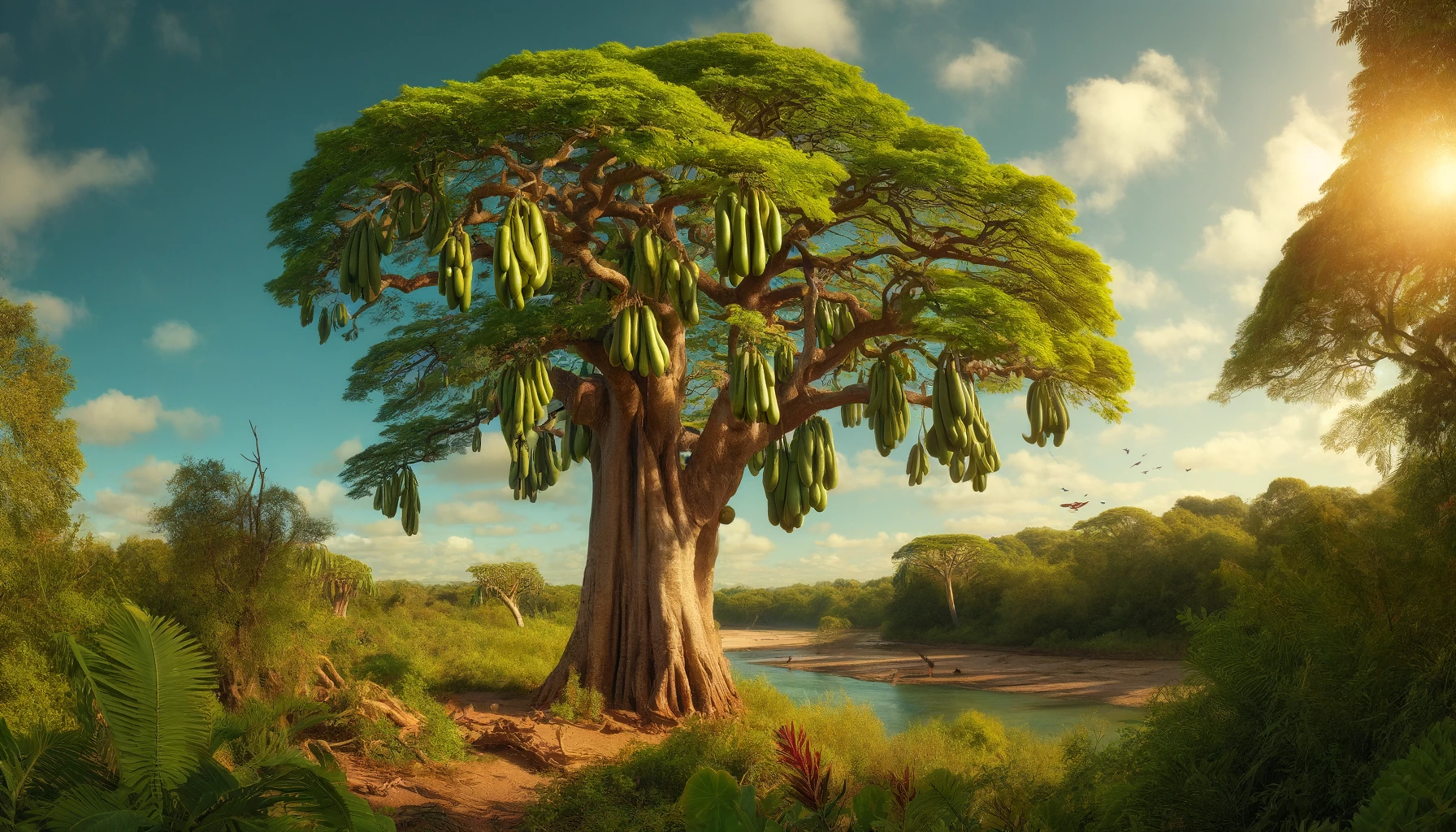The Kigelia plant, commonly known as the sausage tree, is a remarkable flowering species belonging to the Bignoniaceae family. Scientifically named Kigelia africana, this tree is indigenous to tropical Africa, including Zimbabwe. Renowned for its unique sausage-shaped fruits and significant cultural, medicinal, and ecological roles, the Kigelia plant is an integral part of Zimbabwe’s natural heritage.
Description
Appearance:
The Kigelia africana can grow up to 20 meters (65 feet) tall, with a dense, spreading crown and a straight trunk. Its pinnate leaves, comprising up to nine bright green leaflets, create a lush canopy.
Flowers:
The tree produces large, bell-shaped flowers that range in color from reddish to purplish. These flowers emit a strong, somewhat unpleasant odor that attracts pollinators like bats, essential for the tree’s reproduction.
Fruit:
The most distinctive feature of the Kigelia plant is its fruit. These large, sausage-shaped pods can grow up to 60 cm (2 feet) long and weigh as much as 12 kg (26 pounds). Despite their appealing appearance, the fruits are toxic when raw but have numerous uses once processed.
Habitat
Native Region:
Kigelia africana is native to tropical Africa and is found in various regions, including Zimbabwe, Senegal, Ghana, Nigeria, Cameroon, the Democratic Republic of Congo, Tanzania, Kenya, Uganda, and South Africa.
Environment:
The tree thrives in riverine forests, floodplains, and open woodlands, often found near rivers and streams where the soil is moist and fertile. It is well-adapted to the warm, tropical climates of these regions, making it a notable species in Africa’s diverse ecosystems.
Uses
Traditional Medicine: The Kigelia plant is renowned for its extensive medicinal properties:
- Skin Conditions: Extracts from the fruit and bark are used to treat skin ailments such as eczema, psoriasis, and fungal infections due to their antibacterial and antifungal properties.
- Ulcers: Properly prepared fruit is used to treat gastric ulcers, leveraging its soothing and healing qualities.
- Digestive Issues: Decoctions made from the bark or roots are used to treat digestive disorders, including dysentery and diarrhea.
- Anti-inflammatory: The plant’s components are used to reduce inflammation and pain, particularly for conditions like arthritis.
- Wound Healing: Traditional healers use preparations from the Kigelia plant to promote wound healing and reduce scar formation.
Cosmetics: The Kigelia plant has found a place in the cosmetics industry for its beneficial effects on the skin:
- Firming and Anti-Aging: Extracts from the Kigelia fruit are incorporated into creams, lotions, and serums for their firming and anti-aging effects on the skin.
- Skin Healing: Cosmetic products containing Kigelia extract soothe and heal damaged or irritated skin, improving overall skin texture and appearance.
- Moisturizing: The plant’s extracts enhance the skin’s moisture retention, making them popular in moisturizing products.
Cultural Uses: The Kigelia plant holds significant cultural importance in various African traditions:
- Rituals and Practices: The tree and its fruit are often used in traditional rituals and practices. Some cultures use the fruit in fertility ceremonies or as talismans for protection.
- Symbolism: In certain African cultures, the sausage tree represents fertility and strength.
- Traditional Ceremonies: The tree is used in ceremonies related to harvests, rites of passage, and other cultural celebrations.
Ecological Importance
Pollination:
The Kigelia tree’s flowers are primarily pollinated by bats, with occasional help from insects and birds. This pollination is crucial for maintaining biodiversity in its native habitats.
Wildlife:
The fruit, though toxic to humans when raw, is consumed by various animals such as baboons, elephants, and hippos. These animals help in seed dispersal, contributing to the tree’s propagation and the health of the ecosystem.
Economic Potential
The Kigelia plant holds considerable economic potential for Zimbabwe. The demand for Kigelia extracts in the cosmetics and pharmaceutical industries is rising, offering opportunities for local communities to develop and market these products. Sustainable harvesting and processing of Kigelia fruits can provide an additional source of income, promoting economic development while preserving traditional knowledge and practices.
The Kigelia plant is a natural treasure of Zimbabwe, offering a wealth of benefits that span cultural, medicinal, and ecological domains. Its unique characteristics and diverse applications make it a valuable resource for local communities and a potential contributor to the country’s economy. By promoting sustainable use and further research into its properties, Zimbabwe can harness the full potential of this remarkable tree, ensuring its benefits are enjoyed for generations to come.












Warning: Undefined variable $user_ID in /home/iniafrica/public_html/wp-content/themes/zox-news/comments.php on line 49
You must be logged in to post a comment Login